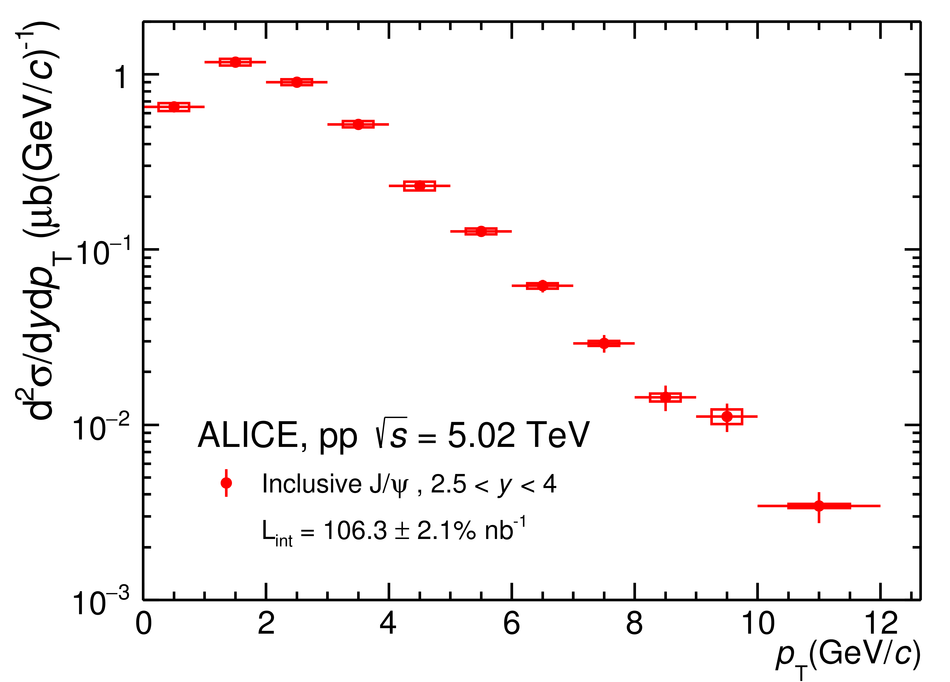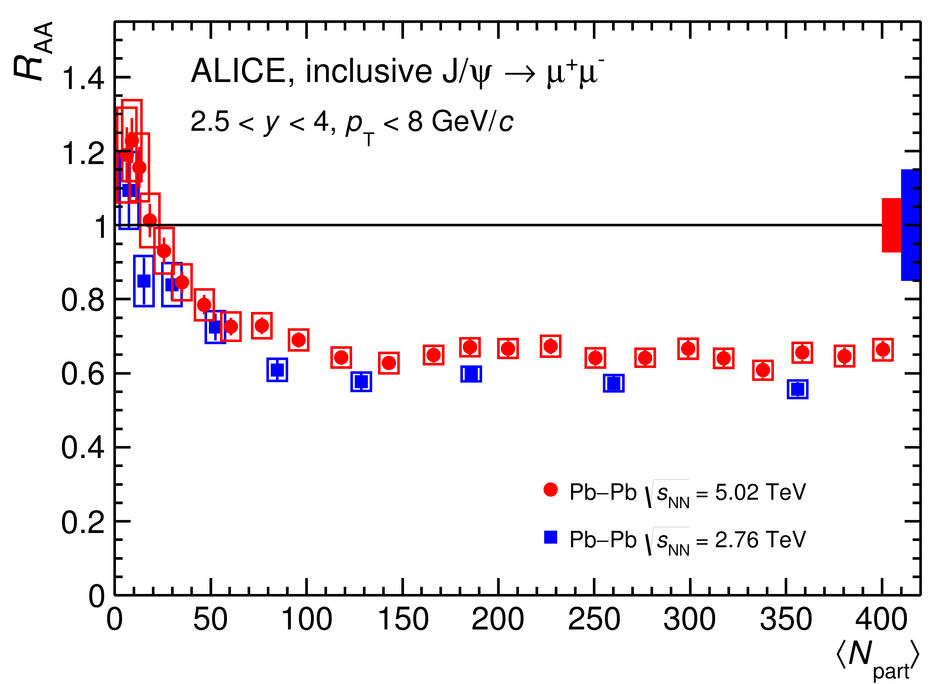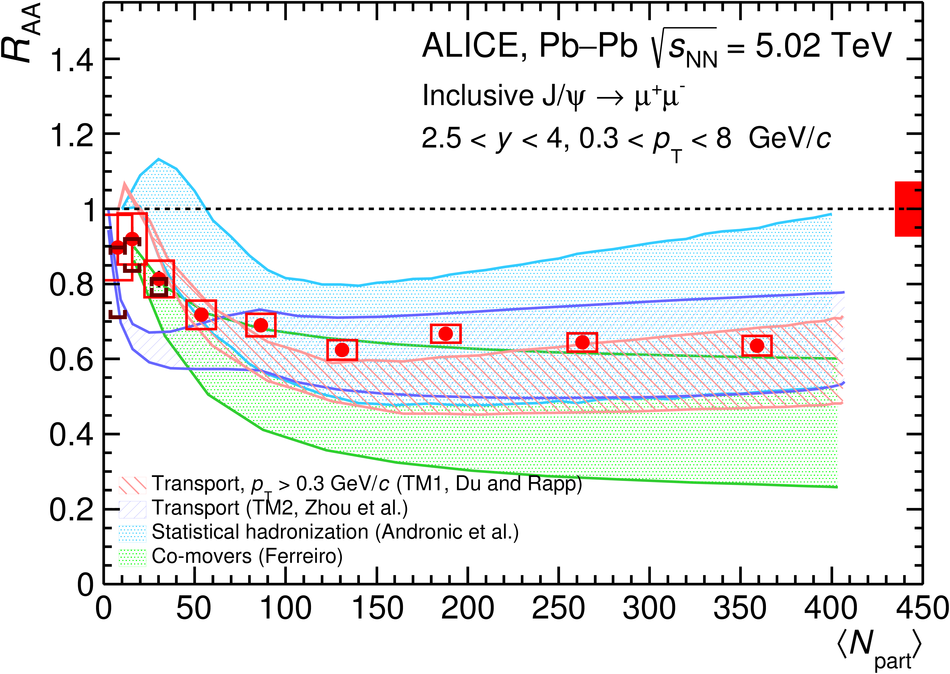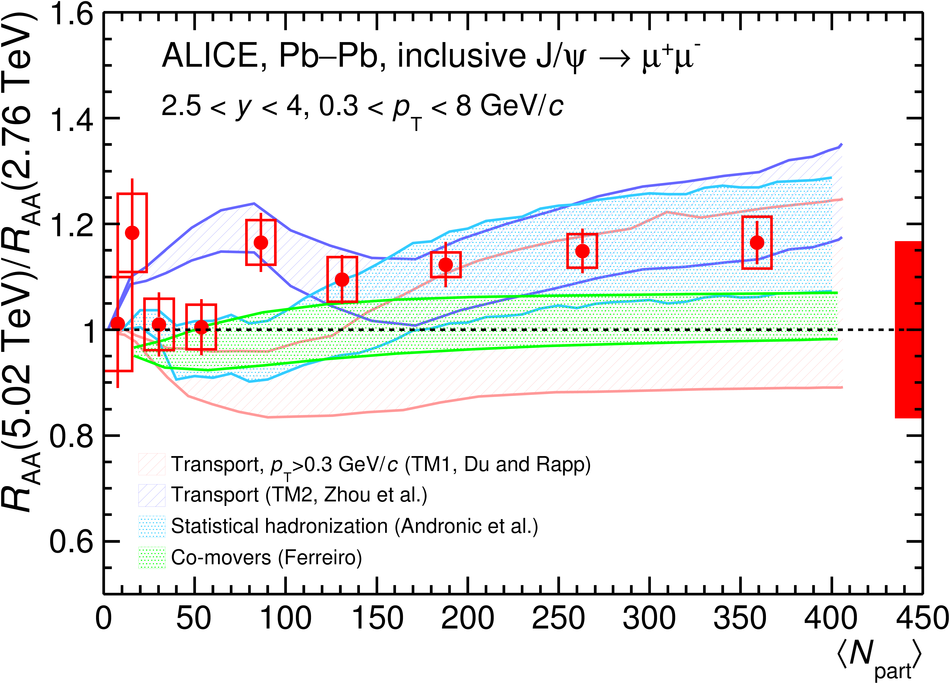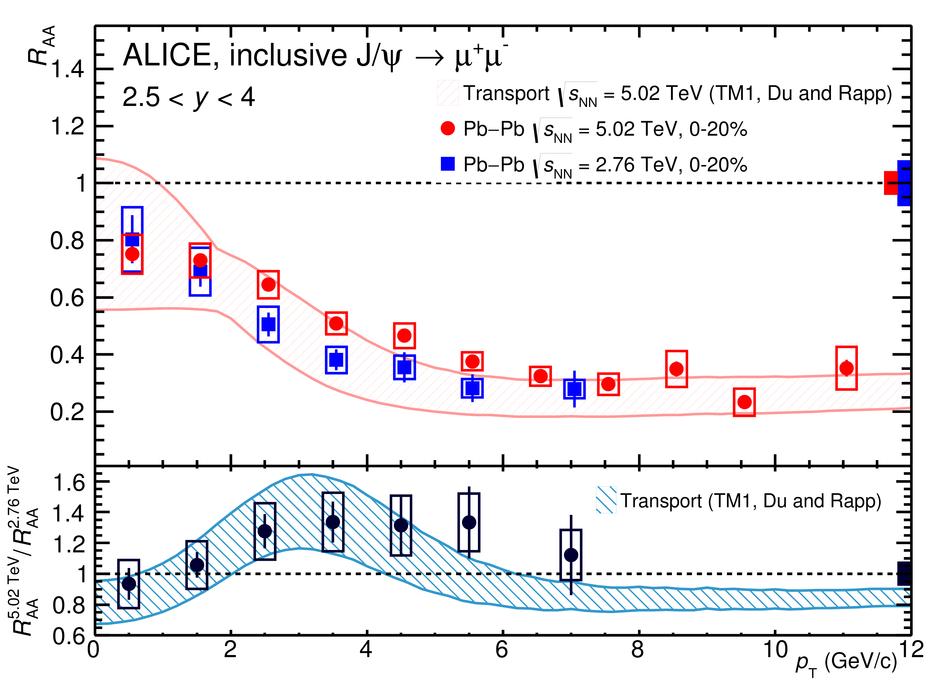The inclusive J/$\psi$ production has been studied in Pn-Pb and pp collisions at the centre-of-mass energy per nucleon pair $\sqrt{s_{\rm NN}}=5.02$ TeV, using the ALICE detector at the CERN LHC. The J/$\psi$ meson is reconstructed, in the centre-of-mass rapidity interval $2.5<~y<~4$ and in the transverse-momentum range $p_{\rm T}<~12$ GeV/$c$, via its decay to a muon pair. In this Letter, we present results on the inclusive J/$\psi$ cross section in pp collisions at $\sqrt{s}=5.02$ TeV and on the nuclear modification factor $R_{\rm AA}$. The latter is presented as a function of the centrality of the collision and, for central collisions, as a function of the transverse momentum $p_{\rm T}$ of the J/$\psi$. The measured $R_{\rm AA}$ values indicate a suppression of the J/$\psi$ in nuclear collisions and are then compared to our previous results obtained in Pb-Pb collisions at $\sqrt{s_{\rm NN}}=2.76$ TeV. The ratio of the $R_{\rm AA}$ values at the two energies is also computed and compared to calculations of statistical and dynamical models. The numerical value of the ratio for central events (0-10\% centrality) is $1.17 \pm 0.04 {\rm{(stat)}}\pm 0.20 {\rm{(syst)}}$. In central events, as a function of $p_{\rm T}$, a slight increase of $R_{\rm AA}$ with collision energy is visible in the region $2<~p_{\rm T}<~6$ GeV/$c$. Theoretical calculations provide a good description of the measurements, within uncertainties.
Phys. Lett. B 766 (2017) 212-224
HEP Data
e-Print: arXiv:1606.08197 | PDF | inSPIRE
CERN-EP-2016-162


